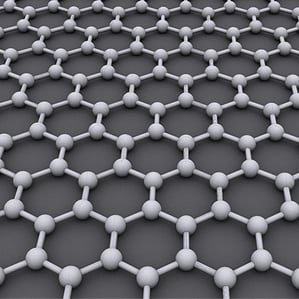Research Hints at Graphene’s Photovoltaic Potential
Researchers have demonstrated that graphene is highly efficient at generating electrons upon absorbing light, which suggests that the material could be used to make light sensors and perhaps even more efficient solar cells.
Conventional materials that turn light into electricity, like silicon and gallium arsenide, generate a single electron for each photon absorbed. Since a photon contains more energy than one electron can carry, much of the energy contained in the incoming light is lost as heat. Now, new research reveals that when graphene absorbs a photon it generates multiple electrons capable of driving a current. This means that if graphene devices for converting light to electricity come to fruition, they could be more efficient than the devices commonly used today.
Previous theoretical work had inspired hope that graphene had this property, says Frank Koppens, a group leader at the Institute of Photonic Sciences in Spain, who led the research. He says the new result, described this week in Nature Physics, represents the first experimental proof.
To perform the experiment, the researchers used two ultrafast light pulses. The first sent a prescribed amount of energy into a single layer of graphene. The second served as a probe that counted the electrons the first one generated.

Koppens says the phenomenon described in the new paper will probably have the most immediate impact in the field of image sensing; his lab is working on a prototype device. He’s “reasonably confident” the group can enhance the performance of light sensors like those used in cameras, night vision goggles, and certain medical sensors.
Among Koppens’s collaborators were MIT physics professor Leonid Levitov and Justin Chien Wen Song, a graduate student in Levitov’s lab, who helped Koppens interpret the data through theoretical modeling.
Although the work only hints at possible solar applications, it shows that graphene could be considered a candidate for use in so-called third-generation solar cells. The term refers to yet-to-be-developed technologies that would overcome the physical limits of conventional solar cells and reach much higher efficiencies. Today’s silicon cells have a theoretical efficiency limit of around 30 percent. Solar cells made of graphene might have a theoretical limit of over 60 percent.
Koppens says many engineering challenges stand in the way of that, though, not the least of which is figuring out how to extract power from the system.
The new paper illustrates a “very important concept,” since future devices will depend on an understanding of the physical processes that occur when graphene absorbs light, says Andrea Ferrari, a professor of nanotechnology at the University of Cambridge in the U.K. Ferrari, who was not involved with this research, says he and colleagues have a still-unpublished paper that describes a similar result. Demonstrating this property in graphene opens a promising new field of research, he says.
Graphene was already exciting as a photovoltaic material because of its unique optical properties, Ferrari explains. The material “can work with every possible wavelength you can think of,” he says. “There is no other material in the world with this behavior.” It is also flexible, robust, relatively cheap, and easily integrated with other materials. The new research “adds a third layer of interest to graphene for optics,” he says.
Keep Reading
Most Popular
Large language models can do jaw-dropping things. But nobody knows exactly why.
And that's a problem. Figuring it out is one of the biggest scientific puzzles of our time and a crucial step towards controlling more powerful future models.
The problem with plug-in hybrids? Their drivers.
Plug-in hybrids are often sold as a transition to EVs, but new data from Europe shows we’re still underestimating the emissions they produce.
Google DeepMind’s new generative model makes Super Mario–like games from scratch
Genie learns how to control games by watching hours and hours of video. It could help train next-gen robots too.
How scientists traced a mysterious covid case back to six toilets
When wastewater surveillance turns into a hunt for a single infected individual, the ethics get tricky.
Stay connected
Get the latest updates from
MIT Technology Review
Discover special offers, top stories, upcoming events, and more.